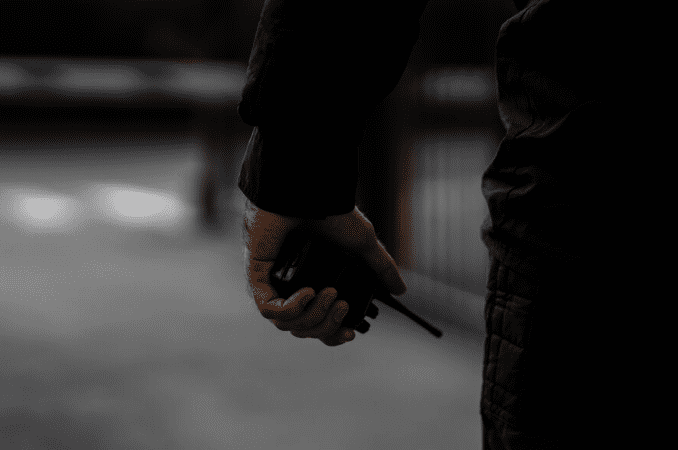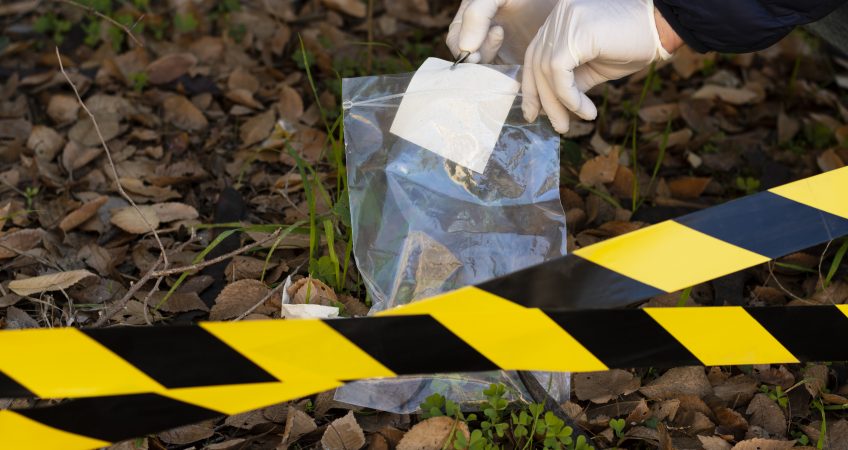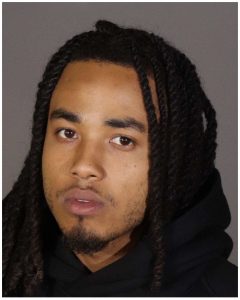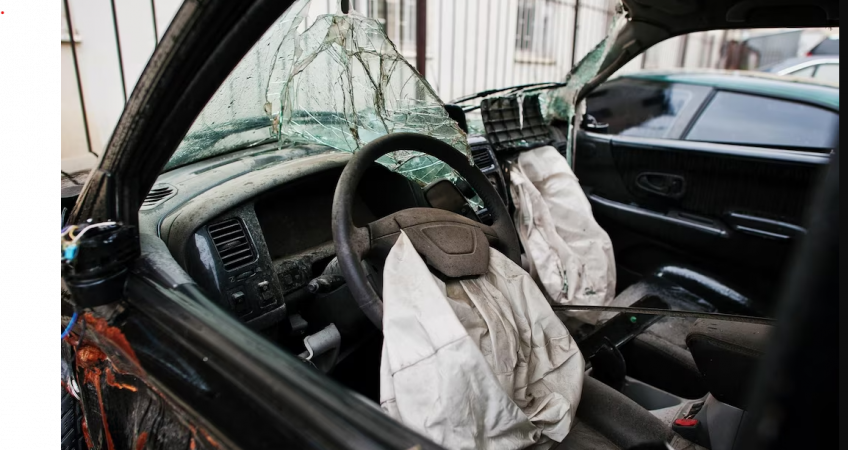Henry Cantor
January 15, 2024
Paul Horton Smith Sr., 59, from Moreno Valley, California, has entered a guilty plea to a federal charge of wire fraud in connection with a Ponzi scheme. This scheme, which spanned nearly two decades, defrauded over $24 million from at least 200 investors, many of whom were elderly or retired. Case Overview Charge and Penal […]
Henry Cantor
January 11, 2024
California Penal Code Section 240 PC: Defending Assault Charges in Los Angeles Assault, defined under California Penal Code Section 240 PC, is a serious criminal offense involving an unlawful attempt, coupled with the ability, to cause physical harm to another person. Unlike battery, which involves actual physical contact, assault focuses on the attempt to inflict […]
Henry Cantor
January 10, 2024
Pat Brady, a 53-year-old Aryan Brotherhood member, confessed to a murder within a Northern California prison, as part of a significant investigation into the gang’s activities. This announcement was made by the U.S. District Attorney’s Office. Details of the Prison Murder In the July 2018 incident at High Desert State Prison in Susanville, Pat Brady, […]
Henry Cantor
January 9, 2024
Often referred to as ‘Gang Enhancements,’ California Penal Code Section 186.22 PC deals with criminal street gangs. It’s integral to the “Street Terrorism Enforcement and Prevention Act”(STEP) in California, addressing gang-related issues. Active Participation in a Criminal Street Gang Subsection (a) of Penal Code Section 186.22 PC defines the consequences for individuals actively participating in […]
Henry Cantor
January 8, 2024
Richard Jason Mountford, a resident of Monterey County, California, confessed to a substantial tax fraud, cheating the IRS out of nearly $900,000. His guilty plea, recorded in a federal court, acknowledges his role in a sophisticated tax scheme from 2016 to 2020. Court documents reveal that Mountford, alongside unnamed accomplices, submitted fraudulent income tax returns. […]
Henry Cantor
January 5, 2024
Photo: ( closeup shot of metal handcuffs and dollars) The federal government has charged Shray Goel and Shaunik Raheja in a complex case involving an $8.5 million scam. This scheme, primarily executed through Airbnb and Vrbo, involved misleading property listings and discriminatory practices against Black renters. Case Details Indictment Charges: Both men face allegations of […]
Henry Cantor
January 4, 2024
In California, the legal landscape surrounding grand theft auto is uncompromising. If you find yourself accused of grand theft auto, you could potentially encounter significant legal consequences. Grand Theft Auto Laws and Penalties in California In California, vehicle theft can lead to charges under one of two primary statutes: Grand Theft Auto: Under Penal Code […]
Henry Cantor
January 2, 2024
Photo: (arrangement at a crime scene) Law enforcement in Sacramento County apprehended a 53-year-old man named Arkete Davis and his 10-year-old son following a tragic shooting incident. The boy, whose identity remains undisclosed, fatally shot another 10-year-old with a stolen gun he discovered in his father’s car. This incident took place in Foothill Farms, […]
Henry Cantor
January 1, 2024
Attorney General Bonta has announced a legal victory in the case of Sadiq Mohammed, a Los Angeles tobacco distributor convicted of running a $3 million tax evasion scheme against the State of California. The California Department of Justice (DOJ) successfully secured a 32-month prison sentence for Mohammed, who had pled guilty to these charges. The […]
Henry Cantor
December 29, 2023
Photo: (www.elcamino.edu) On December 24, at El Camino College in Torrance, California, an assailant attacked a woman in her 60s with a sledgehammer while she collected recyclables. This assault occurring after 7 p.m. in the 16000 block of Crenshaw Boulevard, led to the woman’s death. Emergency responders transported the victim to a hospital where she […]
Henry Cantor
December 28, 2023
Navigating the criminal justice system in California, particularly for first-time defendants, can be daunting. A key component of this system is the plea bargain, a tool used in the vast majority of criminal cases. This article provides a clear, professional insight into the role of plea bargains in California, offering valuable information for anyone involved […]
Henry Cantor
December 25, 2023
Drug-Impaired Driving in California In California, the law defines drug-impaired driving as operating a vehicle while under the influence of any substance, excluding alcohol, that significantly impairs your muscles, brain, or nervous system. This definition includes a wide range of substances, from illegal drugs like methamphetamine and heroin to legal medications such as marijuana, over-the-counter […]
Henry Cantor
December 22, 2023
Derrick Ward, a former NFL player with the New York Giants, found himself in police custody in Los Angeles on suspicion of robbery. The Los Angeles County District Attorney’s Office officially confirmed Ward’s arrest, which took place on Monday evening. However, authorities had not yet formally presented the case to prosecutors for their consideration of […]
Henry Cantor
December 20, 2023
In Lancaster, a road rage incident has taken a tragic turn, leading to serious legal charges against Byron Burkhart. This case, progressing through the California legal system, highlights the severe consequences of such violent actions. Byron Burkhart, accompanied by his girlfriend, reportedly instigated a road rage incident on Sierra Highway. This situation escalated when Burkhart […]
Henry Cantor
December 20, 2023
Photo Credit: (Bolton’s Photograph) Via: www.lapdonline.org Case Overview and Key Details: The arrest of 21-year-old Bobby Bolton marked a significant development in addressing a series of residential burglaries in Granada Hills and Porter Ranch, California. Devonshire detectives, after a thorough investigation, successfully linked Bolton to these crimes. This breakthrough was largely due to the diligent […]
Henry Cantor
December 19, 2023
Domestic violence is a significant issue that doesn’t spare any age group, including minors. In California, the rise in domestic violence cases among juveniles has led to a more focused response from the legal system. When minors are involved in such incidents, they face a legal process that can lead to either misdemeanor or felony […]
Henry Cantor
December 18, 2023
Palmdale Mayor Pro Tem Andrea Alarcón, is currently facing legal challenges stemming from a recent DUI Arrest. Around 3 a.m. in downtown Glendale, California, law enforcement officers observed Alarcón’s vehicle displaying erratic driving behavior. Her actions included making wide turns into opposing lanes, prompting officers to intervene. This led to her arrest on suspicion of […]
Henry Cantor
December 15, 2023
Detailed Incident Overview: In a case that has garnered attention for its severity, Jarris Jay Silagi, a 44-year-old resident of Los Angeles, faces multiple charges after an alleged attack on an elderly Jewish couple in Beverly Hills. This incident, marked by its violent and discriminatory nature, highlights critical aspects of criminal law, particularly in the […]
Henry Cantor
December 14, 2023
Case Summary The sentencing of Alan Hostetter, the former La Habra police chief, to over 11 years in prison is a pivotal development in the legal proceedings following the January 6, 2021, U.S. Capitol riot. This analysis delves into the case specifics, the charges, and the broader legal implications of this high-profile sentencing. Alan Hostetter […]
Henry Cantor
December 14, 2023
Incident Description Sheng Gao, 18, is facing a charge of aggravated trespassing for an alleged incident at the Atherton home of NBA Warriors star Steph Curry. Gao managed to access Curry’s property by manipulating the security gate keypad, granting him entry to the premises. Once inside, he proceeded up the driveway and entered the residence […]
Henry Cantor
December 13, 2023
Overview: Understanding Murder and Manslaughter in California In California, the distinction between murder and manslaughter has critical implications for anyone facing homicide charges. While both offenses involve the unlawful killing of another person, the legal definitions and penalties differ significantly. These distinctions affect the severity of potential sentencing and the legal strategies that defense attorneys […]
Henry Cantor
December 12, 2023
Grizzlies’ star Ja Morant, recently testified in a Memphis courtroom. He stated that his altercation with teenager Joshua Holloway at his home was an act of self-defense. This testimony marks Morant’s first court appearance in the lawsuit. In July 2022, at Ja Morant’s home, an altercation occurred during a pickup basketball game involving Morant and […]
Henry Cantor
December 11, 2023
Mikey Williams, a prominent basketball recruit, recently navigated a crucial phase in his legal proceedings. By entering a plea deal in a high-profile gun case, Williams marked a significant shift in a case that has garnered extensive attention. The Plea Deal in Detail Williams faced nine felony charges, arising from a shooting incident at his […]
Henry Cantor
December 8, 2023
Gareth Pursehouse Receives Life Sentence On Wednesday, December 6, Hollywood sex therapist Amie Harwick’s ex-boyfriend received a life sentence without parole. This decision was announced by the Los Angeles County District Attorney’s Office. Gareth Pursehouse, 45, was convicted of murder in September. He threw Harwick over a balcony at her Hollywood Hills home on February […]
Henry Cantor
December 7, 2023
DUI vs. Wet Reckless Charge: Understanding the Differences In Los Angeles, those facing DUI charges might plead to a lesser “wet reckless” charge. This option often arises when evidence is weak or the defendant’s BAC is low. This article examines the distinctions between DUI and wet reckless charges in California. What Is a Wet and […]
Henry Cantor
December 6, 2023
Case Overview Sasha Lizette Jimenez, a 26-year-old from Riverside County, California, received a sentence for her involvement in a major unemployment insurance fraud case. This case showcases the serious legal consequences of large-scale financial fraud. Jimenez and her accomplices, including her boyfriend Meshach Samuels, defrauded the California Employment Development Department (EDD) of over $2.8 million. […]
Henry Cantor
December 5, 2023
The Impact of a DUI Conviction in California In California, driving with a blood alcohol content (BAC) of 0.08% or higher is illegal, with stricter limits for commercial drivers and those under 21. The consequences of a DUI conviction are substantial and long-lasting, including: Significant fines. A possible jail term of up to six months. […]
Henry Cantor
December 4, 2023
On June 7, 2023, a traffic accident in the Pico-Robertson district of Los Angeles led to a family of three being struck. The incident, occurring on the 6100 block of West Pico Boulevard, claimed the life of 51-year-old Bing Wang. His wife, Xiaomei Wang, and their son, Wenxuan Wang, sustained serious injuries. Vladimir Tishchenko, the […]
Henry Cantor
November 30, 2023
Josh Giddey, a prominent player for the Oklahoma City Thunder in the NBA, is under investigation by the Newport Beach Police Department. The probe concerns allegations of an inappropriate relationship with an underage girl. The allegations surfaced when photos and social media posts involving Giddey and a 15-year-old girl became public. The incident reportedly took […]
Henry Cantor
November 28, 2023
Location: Disneyland, California. Time of Incident: The incident took place on Sunday, November 26, 2023, at around 1:30 p.m. Suspect: A 26-year-old man, identity undisclosed. Charges: Indecent exposure and being under the influence of a controlled substance. A 26-year-old man caused a significant disturbance at Disneyland, California, leading to his arrest for indecent exposure and […]
Henry Cantor
November 27, 2023
Beverly Hills Police took Tiffany Haddish into custody Friday, November 24, 2023, around 5:45 a.m. They responded to a call about a car blocking the road on Beverly Drive near Dayton Way. Officers found Haddish inside the vehicle and suspected her of DUI. This incident follows her previous DUI charge in Georgia, complicating her current […]
Henry Cantor
November 21, 2023
PC 487 Grand Theft in California: What It Means and How to Fight the Charges In California, the law categorizes theft based on the value and nature of the property someone takes without permission, intending to permanently deprive the owner of its value. The state’s criminal statutes distinguish between “grand theft” and “petty theft,” each […]
Henry Cantor
November 20, 2023
In a shocking turn of events, the Fairfax District of Los Angeles witnessed a violent shooting near The Grove shopping center. This incident, which unfolded in the afternoon hours, has raised numerous legal questions and concerns about public safety. It’s crucial to understand the potential charges and defenses under California law. The Incident: On Thursday, […]
Henry Cantor
November 17, 2023
The arrest of Dino Rojas-Moreno for Tatum Goodwin’s alleged murder in Laguna Beach marks the beginning of a complex legal case under California law. The Incident in Detail: On the morning of November 12, 2023, Tatum Goodwin, a 27-year-old local waitress, was found dead in an alleyway near her workplace. The discovery, made by a […]
Henry Cantor
November 16, 2023
The recent arrest of Loay Alnaji, 50, in connection with the death of Paul Kessler, during a protest in Thousand Oaks, California, has brought involuntary manslaughter charges into sharp focus. This case, emerging from a pro-Israel and pro-Palestine rally, offers a critical lens to examine the complexities of involuntary manslaughter under California law. Key Case […]
Henry Cantor
November 14, 2023
Anthony Farrer, 35, founder of the Timepiece Gentleman in Beverly Hills, was arrested for his alleged involvement in a Ponzi scheme centered around luxury watches. This arrest, marked by Farrer’s lavish lifestyle and extensive social media influence, brings forth critical legal considerations under California law. Our analysis delves into the potential charges and their implications, […]
Henry Cantor
November 13, 2023
The Incident: Adrian Burton and Tanganique Bendard are currently facing charges for allegedly orchestrating a theft at a Sephora store located on Garfield Avenue in Alhambra, California. The incident involved the theft of merchandise collectively valued at approximately $10,000. The Alhambra Police Department quickly apprehended the suspects after the incident. Acting on detailed descriptions and […]
Henry Cantor
November 8, 2023
The Incident: A tragic collision occurred on Saturday, November 4, around 1:15 a.m. at the intersection of Roscoe Boulevard and Lindley Avenue in Northridge, resulting in the deaths of an off-duty LAPD officer and another individual. Officer Darrell Cunningham, a nearly five-year veteran of the LAPD’s West L.A. Division, and a yet-to-be-named passenger were killed […]
Henry Cantor
November 8, 2023
The recent Mid-City home invasion, where a homeowner fired on armed intruders, provides a real-world context for understanding California’s self-defense laws. This analysis connects the homeowner’s statements with the relevant legal statutes. Imminent Threat and the Use of Deadly Force The Mid-City Resident faced armed trespassers, a direct threat stated in California Penal Code Section […]
Henry Cantor
November 6, 2023
Police took a man into custody in downtown Los Angeles. The incident, which escalated to a standoff at a 50-unit complex at Olive Street and Olympic Boulevard, began after neighbors reported a series of 15 to 20 gunshots. Responding officers found that the tenant had fired at his apartment floor before sealing himself inside. The […]
Henry Cantor
November 6, 2023
Los Angeles police arrested Assemblymember Wendy Carrillo for DUI following a collision. Her high BAC and the crash have drawn public attention. Examining the Incident: On Friday, November 3rd, at approximately 1:30 a.m., police responded to an incident involving Carrillo. She had hit parked cars, and her blood-alcohol level was reportedly twice the legal limit. […]
Henry Cantor
November 3, 2023
In Riverside County, the case of Kendall Clark has become a focal point of legal scrutiny. At 25, Kendall Clark faces 18 felony charges for allegedly masterminding a complex theft ring targeting luxury vehicles. Detailed Charges Against Clark Grand Theft Auto Charges Under the specific provisions of California Penal Code Section 487(d)(1), Kendall Clark faces […]
Henry Cantor
October 30, 2023
Facing Corporal Injury Charges Under Penal Code 273.5(a) in California Domestic violence charges in California carry serious legal consequences, especially if you’re facing accusations under Penal Code 273.5(a) for corporal injury to a spouse or cohabitant. If convicted, you could face jail time, steep fines, and a lasting criminal record, all of which could negatively […]
Henry Cantor
October 25, 2023
CALABASAS, CA — Former NFL star Terrell Owens became the focal point of a legal incident in Calabasas. On October 16, after a disagreement post a basketball game, an individual reportedly targeted Owens with his car, specifically aiming for his knee. The Los Angeles County Sheriff’s Department provided a statement on the matter: “As the […]
Henry Cantor
October 23, 2023
MALIBU, CA — A heart-wrenching collision on the Pacific Coast Highway has resulted in the deaths of four Pepperdine University sorority sisters. The incident unfolded around 8:30 p.m. on Tuesday, October 17, near the 21600 block of PCH by Carbon Canyon. Fraser Bohm, 22, was at the wheel of a red BMW the evening after […]
Henry Cantor
October 18, 2023
Alfred Labrada, a seasoned officer with the Los Angeles Police Department and a 30-year veteran, has been put on leave following allegations of stalking. Assistant Chief of the Los Angeles Police Department, Labrada faces claims that he stalked a female colleague by planting an Apple AirTag tracking device in her luggage. These allegations have led […]
Henry Cantor
October 16, 2023
The hip-hop world and legal community alike were stunned when news broke: Duane Keith “Keefe D” Davis was arrested in connection with the 1996 murder of rap icon Tupac Shakur. This case, which has remained one of music’s most enduring mysteries, offers a unique intersection of entertainment and law. The Unresolved Crime In September 1996, […]
Henry Cantor
October 13, 2023
Mikey Williams, known for his standout performances at San Ysidro High School and his commitment to the University of Memphis, is currently facing legal challenges that have thrust him into a different kind of spotlight. This article provides an in-depth analysis of the felony gun charges, associated penal codes, and the incident that has become […]
Henry Cantor
October 9, 2023
Riverside County sheriff’s deputy Christian Heidecker’s case has drawn widespread attention. He faces 18 charges, including sexual assault, extortion, and bribery. These charges arise from his dealings with women in a home electronic detention program in California. Let’s explore the case’s key aspects. The Charges: Sexual Assault, Extortion, and Bribery Engaging in Sexual Acts Without […]
Henry Cantor
October 4, 2023
On the 57 Freeway in Pomona, a DUI crash resulted in the tragic death of a 12-year-old boy. The suspected driver was his father, 33-year-old Ignacio Vazquez. Incidents like these highlight the serious legal consequences of impaired driving in California. This article examines the potential legal ramifications, referencing California’s manslaughter statutes Manslaughter vs. Murder In […]



















